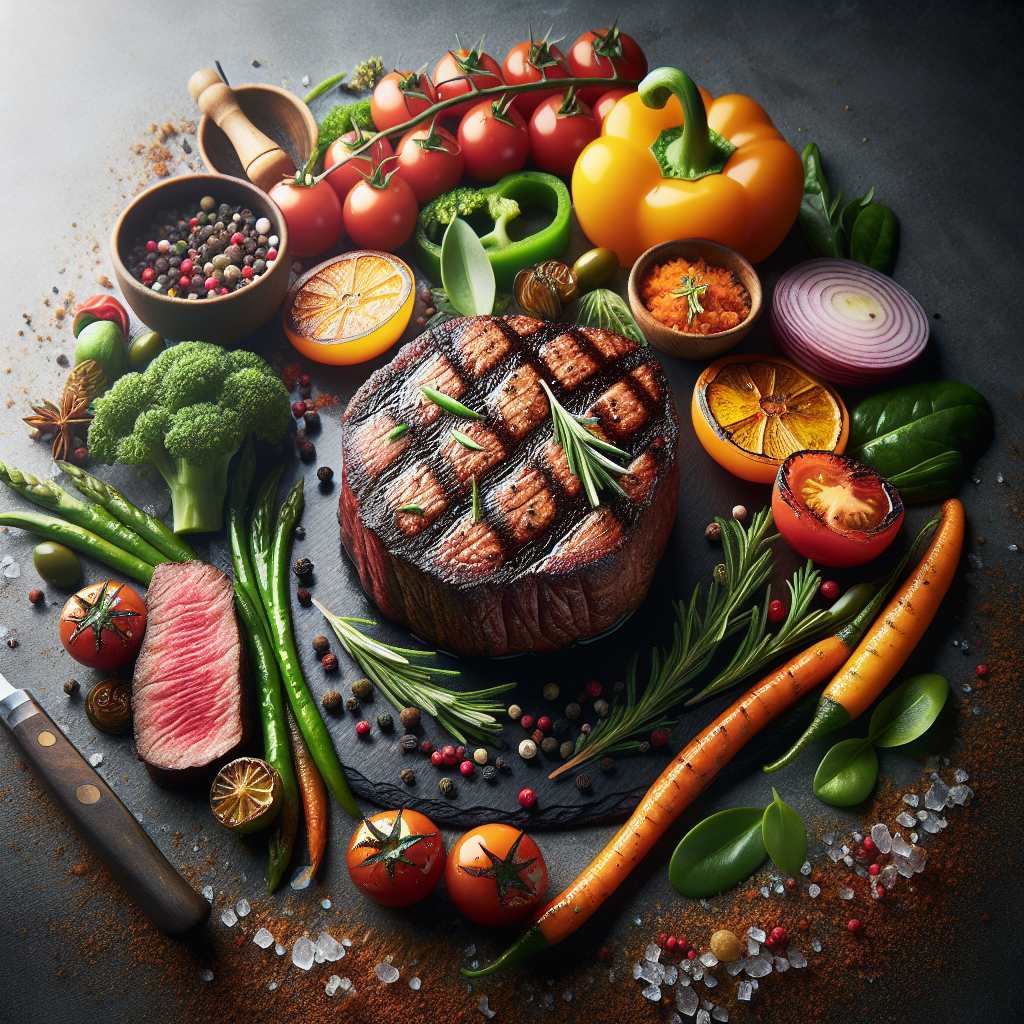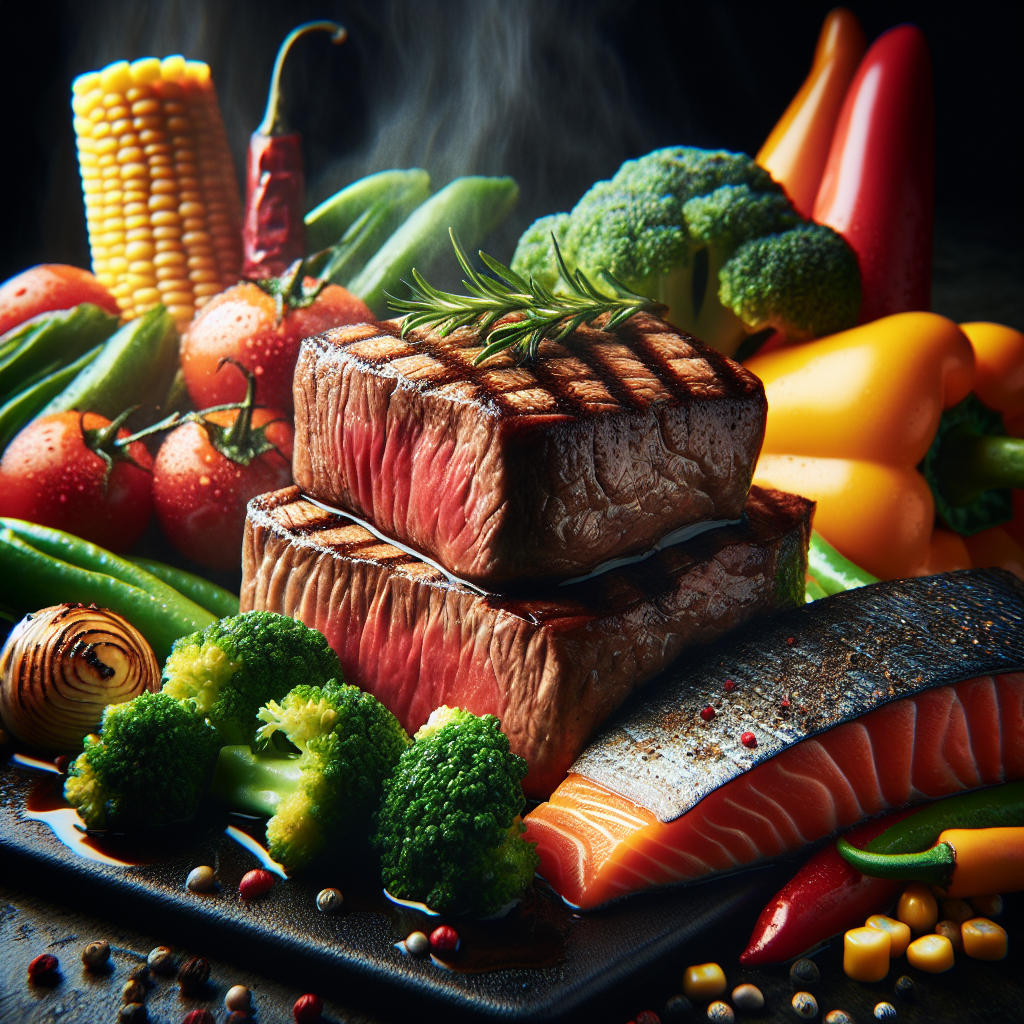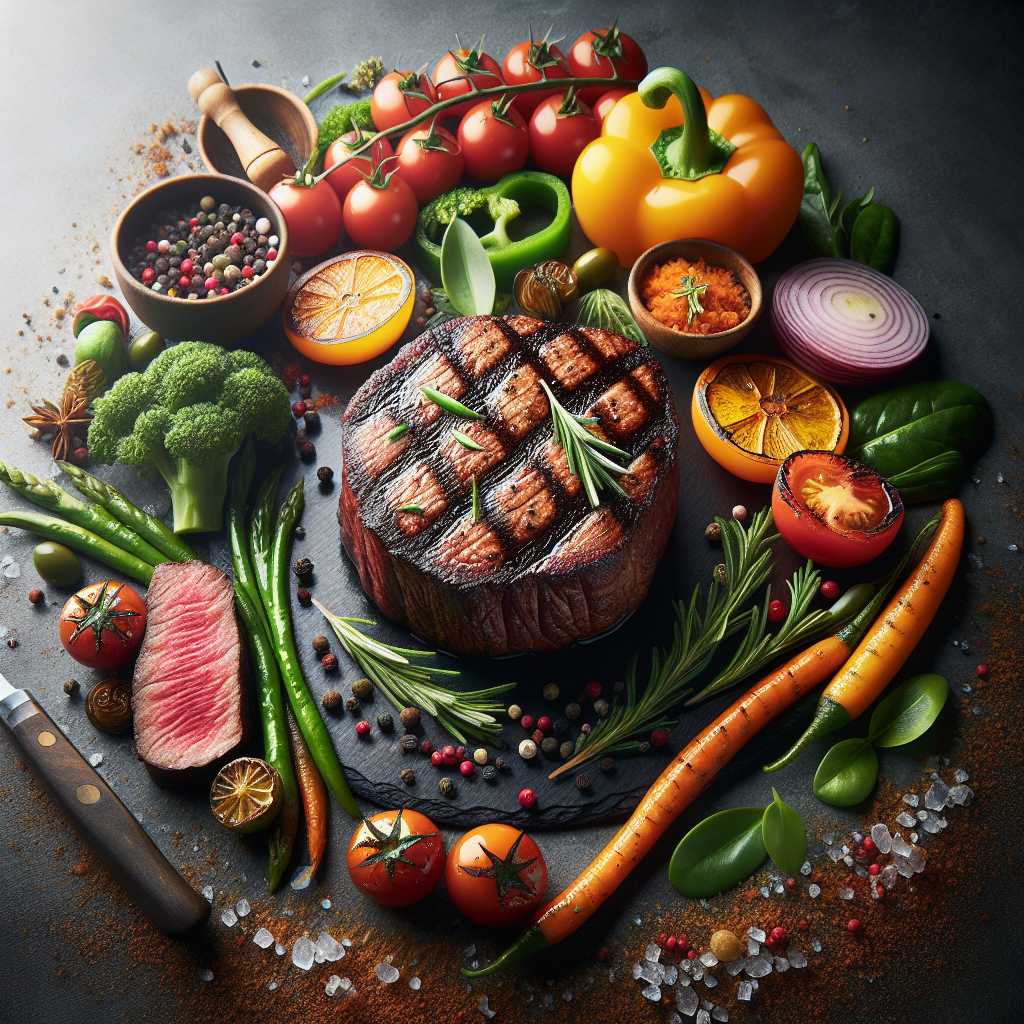
In the world of sous vide cooking, ensuring that your food is perfectly cooked may seem like a daunting task. But fear not, because I’m here to provide you with all the guidance you need. When it comes to determining if your food is done cooking sous vide, there are a few key indicators to look out for. By paying attention to factors such as time, temperature, and texture, you’ll be able to achieve deliciously cooked meals with ease. Whether you’re a seasoned sous vide pro or just starting out on your culinary journey, this article will equip you with the knowledge and confidence to cook your food to mouthwatering perfection every time. So let’s dive in and uncover the secrets to knowing when your food is done cooking sous vide!
Determining Cook Times
Understanding the Basics of Sous Vide Cooking
When it comes to determining the cook times for sous vide cooking, it is important to have a good understanding of the basics. Sous vide is a cooking technique that involves sealing food in a vacuum-sealed bag and cooking it in a water bath at a precise temperature. Unlike traditional cooking methods, the temperature remains constant throughout the cooking process, ensuring even and consistent results. The cook time for sous vide cooking can vary depending on factors such as the type of food being cooked, its size and thickness, and personal preference.
Factors Affecting Cook Times
Several factors can affect the cook times in sous vide cooking. The size and thickness of the food item play a significant role in determining the cook time. Thinner cuts of meat or fish will require less time to cook compared to thicker cuts. Additionally, the desired level of doneness will impact the cook time. For example, if you prefer your steak medium-rare, it will require less time in the water bath compared to a well-done steak. Lastly, the starting temperature of the food can also influence the cook time. If the food is already partially cooked or thawed, it may require less time to reach the desired temperature.
Types of Food and Their Cook Times
Different types of food require different cook times when using the sous vide method. Here are some general guidelines for common food items:
-
Beef: For a medium-rare steak, you can cook it at 129°F (54°C) for 1 to 4 hours, depending on the thickness. For a well-done steak, increase the temperature to 149°F (65°C) and cook for the same amount of time.
-
Chicken: Chicken breasts can be cooked at 147°F (64°C) for 1 to 3 hours. Thicker cuts may require slightly longer cook times.
-
Fish: Delicate fish, like salmon, can be cooked at 122°F (50°C) for 20 to 30 minutes. Firmer fish, such as tuna, can be cooked at a slightly higher temperature of 131°F (55°C) for 30 to 60 minutes.
-
Vegetables: Vegetables can be cooked at various temperatures depending on the desired texture. For crisp-tender vegetables, cook them at 183°F (84°C) for 15 to 30 minutes. For completely tender vegetables, increase the temperature to 194°F (90°C) and cook for the same amount of time.
It is important to note that these are just general guidelines, and it’s always best to consult a reliable source or a recipe for specific recommendations.
Using Time and Temperature Guidelines
Consulting Reliable Sources for Guidelines
When determining the cook times for sous vide cooking, it is always a good idea to consult reliable sources for guidelines. There are several reputable sous vide cookbooks, online resources, and cooking apps that provide detailed instructions and temperature guidelines for various types of food. These sources have been tested and verified, ensuring that you achieve safe and delicious results.
Customizing Cook Times for Personal Preferences
While following guidelines is a great starting point, it’s important to remember that personal preference plays a crucial role in determining the cook time as well. If you prefer your steak more on the medium side rather than medium-rare, you can adjust the cook time accordingly. Similarly, if you like your vegetables to be slightly more tender, you can increase the cook time slightly. Sous vide cooking allows for a high degree of customization, so feel free to experiment and adjust the cook times based on your preferences.
Considering Food Safety
Food safety is paramount when cooking sous vide. It is essential to ensure that the food reaches a safe internal temperature to kill any harmful bacteria and ensure it is safe to eat. Using reliable sources and guidelines will help you determine the minimum safe internal temperature for different types of food. Always err on the side of caution and make sure that the food is cooked to the recommended temperature to prevent any risk of foodborne illnesses.
Monitoring Cooking Progress
Using a Timer or Alarm
When cooking sous vide, it is important to monitor the cooking progress to ensure that the food is cooked for the appropriate amount of time. Using a timer or alarm can help you keep track of the cook time and prevent overcooking. Set a timer based on the recommended cook time for the specific food item, and make sure to check the food at regular intervals to assess its progress.
Checking the Texture and Temperature
One of the advantages of sous vide cooking is that you can easily check the texture and temperature of the food throughout the cooking process. To assess the texture, lightly squeeze the food to feel its firmness. For example, if you’re cooking a steak, you can press on it to gauge its level of doneness. Additionally, you can use a probe thermometer to check the internal temperature of the food. Make sure to insert the thermometer into the thickest part of the food to get an accurate reading.
Adjusting Cook Time if Necessary
If you find that the food is not cooked to your desired level of doneness, you can adjust the cook time accordingly. Simply add more time to the initial cook time and continue cooking until the food reaches the desired texture and temperature. Sous vide cooking allows for this flexibility, making it easier to achieve the perfect results every time.
Sous Vide Visual Indicators
Observing Color and Texture Changes
Visual indicators can also help determine the doneness of food when cooking sous vide. As the food cooks, you may notice changes in color and texture. For example, a steak may change from a deep red to a rosy pink as it reaches medium-rare. Fish may become more opaque and flake easily when gently pressed with a fork. By observing these visual cues, you can get a better idea of how close the food is to being done.
Noting Changes in Food Appearance
In addition to color and texture changes, pay attention to the overall appearance of the food. Some sous vide-cooked foods may develop a matte appearance or lose some of their natural shine. This can be an indicator that the food is approaching the desired level of doneness. Conversely, if the food appears too raw or undercooked, it may need additional cook time to reach the desired result.

Using Recipe Recommendations
Following Step-by-Step Instructions
One of the easiest ways to determine the cook times for sous vide cooking is to follow step-by-step instructions from reliable recipes. Sous vide recipes often provide specific cook times based on the type of food, thickness, and desired level of doneness. By following these instructions, you can have confidence that the food will be cooked to perfection.
Taking Note of Estimated Cook Times
When using recipe recommendations, it is important to note the estimated cook times provided. These times act as a general guideline but may need slight adjustments depending on factors such as the actual thickness of the food or personal preference. By taking note of the estimated cook times, you can have a starting point for your own customization.
Allowing for Variations
It’s important to remember that cooking times can vary based on the specific circumstances, such as the accuracy of your sous vide machine or the starting temperature of the food. Don’t be afraid to make adjustments based on your own observations and experiences. Sous vide cooking is a journey of experimentation, and by allowing for variations, you can fine-tune the cook times to suit your taste.
Testing Food for Doneness
Using a Probe Thermometer
A probe thermometer is an invaluable tool when it comes to testing food for doneness in sous vide cooking. By inserting the thermometer into the thickest part of the food, you can get an accurate reading of its internal temperature. Make sure to avoid touching any bones or the cooking vessel itself, as this can affect the accuracy of the reading. Refer to a reliable source for the recommended internal temperature for the specific food you’re cooking.
Performing the Pinch Test
The pinch test is a simple yet effective way to test the doneness of certain foods. For example, when cooking vegetables sous vide, you can pinch them between your fingers to assess their tenderness. If they offer a slight resistance but are still tender, they may be ready to be removed from the water bath. However, if they are too firm, you can continue cooking them until they reach the desired texture.
Testing for Texture and Tenderness
Ultimately, the most important factor in determining doneness is the texture and tenderness of the food. When testing for texture, use your senses to assess how the food feels. Does it have the right amount of firmness? Is it too tender or too tough? By observing and tasting the food, you can make an informed decision about whether it’s cooked to your liking.

Understanding Resting Time
Resting Meat and Vegetables
Resting time is an essential step in the cooking process, even in sous vide cooking. After the food is cooked sous vide, it is important to allow it to rest for a few minutes. This helps the juices within the food redistribute, resulting in a more flavorful and tender end result. For meat, resting also helps the fibers relax, resulting in better texture.
Allowing Juices to Settle
During the resting period, the juices in the meat or vegetables will settle, ensuring that they are distributed evenly throughout the food. This can enhance the overall flavor and juiciness of the final dish. Resting the food also allows any residual heat to continue cooking the food slightly, helping it reach the desired level of doneness.
Optimizing Flavor and Texture
Resting time plays a crucial role in optimizing the flavor and texture of sous vide-cooked food. As the food rests, the flavors have a chance to meld together, resulting in a more cohesive and flavorful dish. Additionally, the texture of meats and vegetables can improve during the resting period, making them even more enjoyable to eat.
Making Adjustments for Repeat Recipes
Documenting Cooking Times and Results
If you frequently cook the same recipes using the sous vide method, it is helpful to document the cooking times and results. By keeping track of the cook times for different types of food, you can create a reference guide for future cooking sessions. This allows you to easily replicate your favorite dishes and ensures consistency in your results.
Considering Personal Preferences for Consistency
When making adjustments for repeat recipes, it is important to take your personal preferences into account. If you find that a certain food item is consistently undercooked or overcooked, you may need to adjust the cook time accordingly. By considering your preferences and fine-tuning the cook times, you can achieve greater consistency in your cooking.
Fine-Tuning Cook Times for Future Success
As you gain more experience with sous vide cooking, you will find that fine-tuning the cook times becomes easier. By making small adjustments each time you cook a particular recipe, you can continually improve and refine your results. Over time, you will develop a better sense of timing and be able to achieve consistently delicious outcomes.
Troubleshooting Undercooked Food
Identifying Signs of Undercooked Food
Despite your best efforts, there may be times when the food comes out undercooked when cooking sous vide. Signs of undercooked food include a lack of tenderness, a raw or rubbery texture, or an internal temperature below the recommended level. If you notice any of these signs, it’s important to address the undercooked food before consuming it.
Recommendations for Salvaging Undercooked Meals
If you find that the food is undercooked, there are a few possible ways to salvage the meal. One option is to finish the cooking in a traditional cooking method such as searing the meat on a hot skillet or grilling it to achieve the desired level of doneness and texture. Alternatively, you can return the food to the water bath and continue cooking it sous vide until it reaches the appropriate temperature.
Avoiding Undercooked Food in the Future
To avoid undercooked food in the future, it’s important to review the factors that may have contributed to the undercooking. Did you accurately follow the recommended cook time and temperature guidelines? Did the food start at the proper temperature? Once you have identified the potential causes, you can make adjustments for future sous vide cooking sessions and minimize the likelihood of undercooked food.
Practice, Patience, and Experience
Developing a Sense of Timing
Like any cooking technique, sous vide cooking requires practice, patience, and experience to develop a sense of timing. With each cooking session, you will become more familiar with the cook times for different types of food and gain a better understanding of how to achieve the desired level of doneness. Trust your instincts and observations, and don’t be afraid to experiment and adjust as needed.
Experimenting with Different Cook Times and Temps
Experimentation is key in sous vide cooking. Don’t be afraid to try different cook times and temperatures to achieve different results. By varying the cooking parameters, you can discover new textures, flavors, and levels of tenderness. Embrace the opportunity to be creative in the kitchen and let your taste buds be your guide.
Learning from Mistakes and Successes
Whether you encounter mistakes or successes in your sous vide cooking journey, always take the opportunity to learn and grow from them. If a particular cook time didn’t yield the desired results, analyze what went wrong and see how you can adjust or improve for next time. Similarly, celebrate your successes and take note of what worked well so you can replicate those results in the future.
In conclusion, determining cook times for sous vide cooking is a combination of following guidelines, using visual indicators, testing for doneness, and personal preference. By understanding the basics, consulting reliable sources, and monitoring the cooking progress, you can achieve perfectly cooked sous vide dishes every time. Remember to embrace experimentation, document your results, and learn from every cooking experience. With practice, patience, and experience, you’ll become a sous vide cooking expert and enjoy delicious meals in the comfort of your own kitchen.





